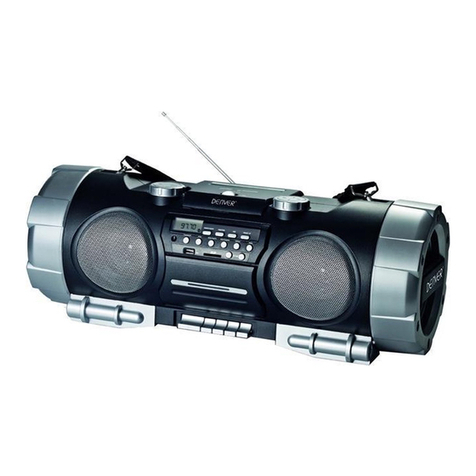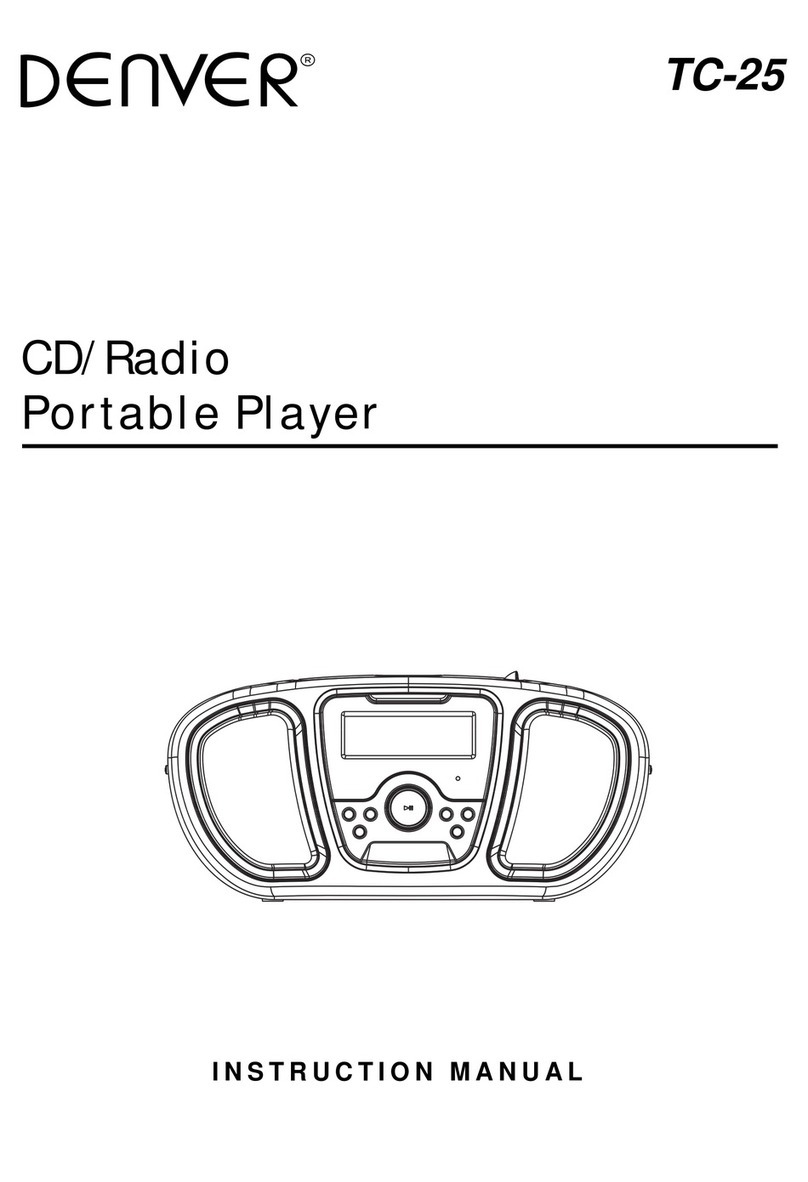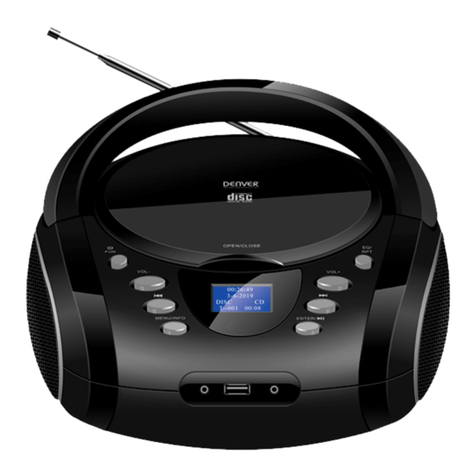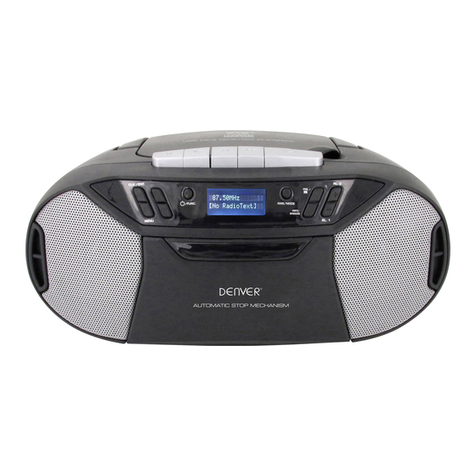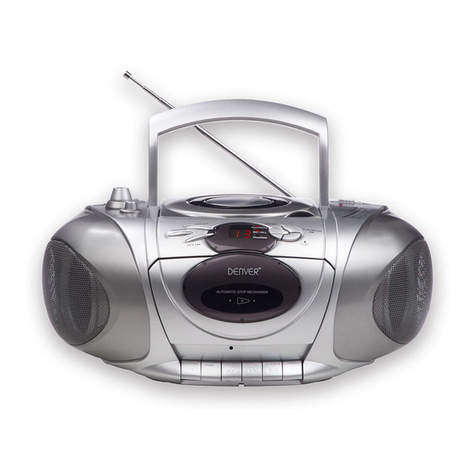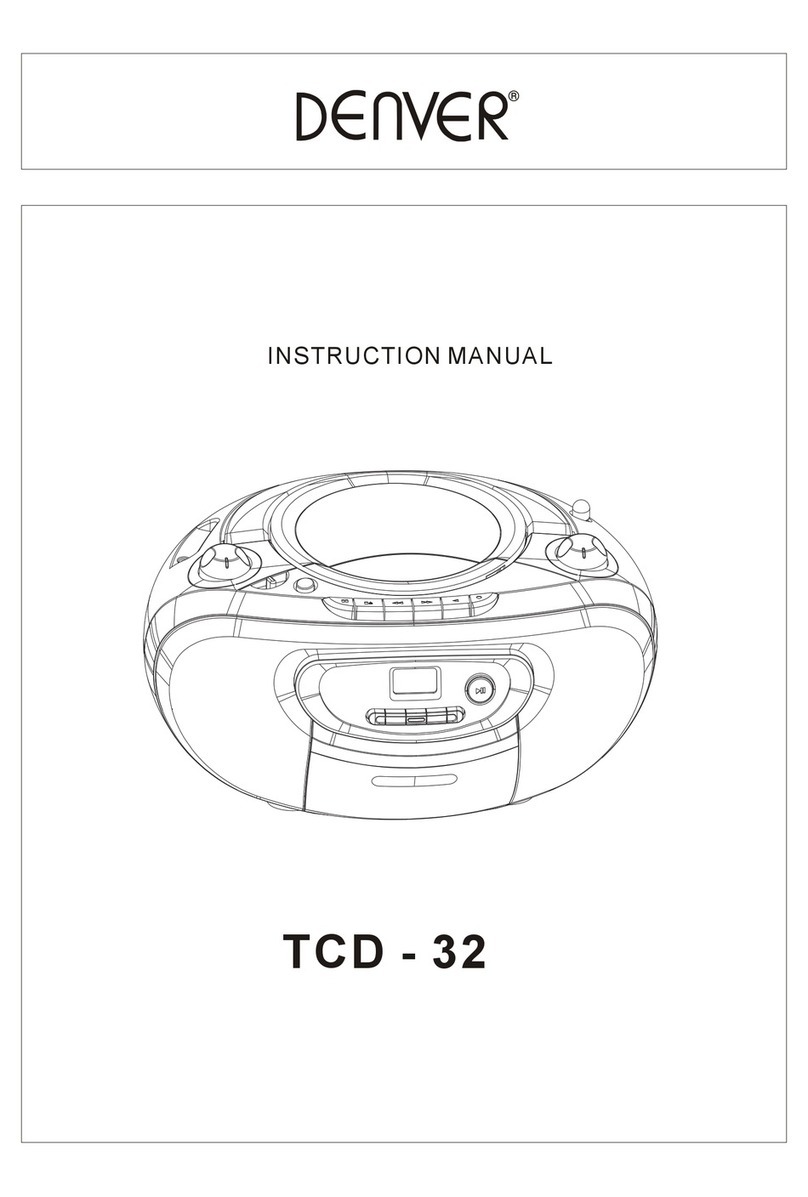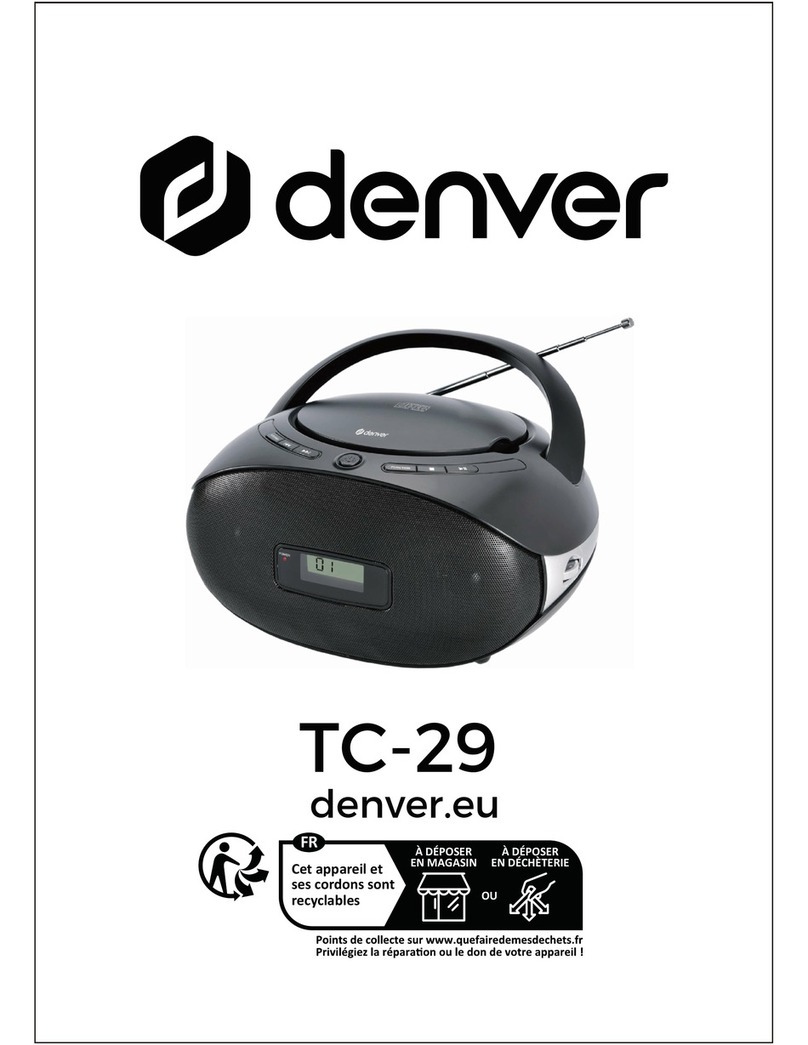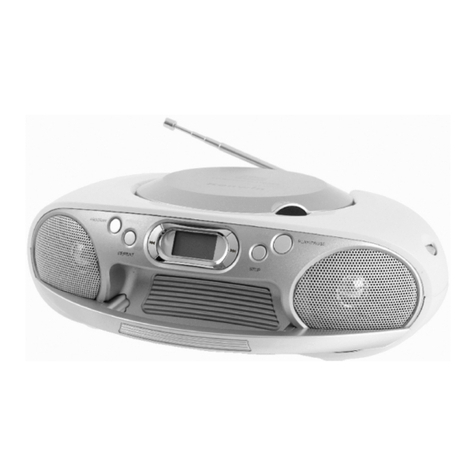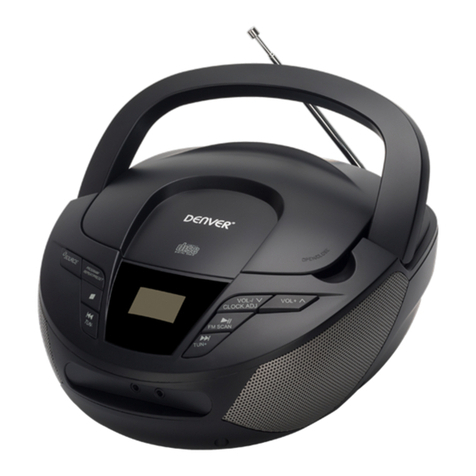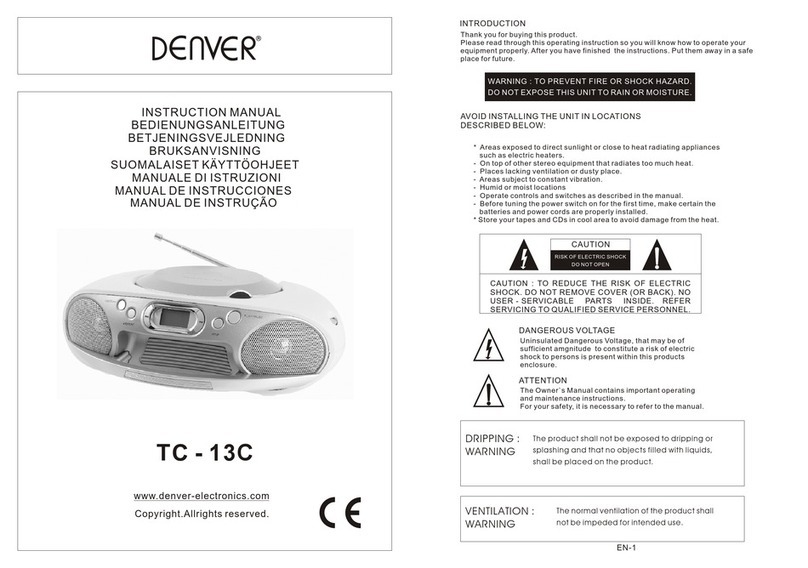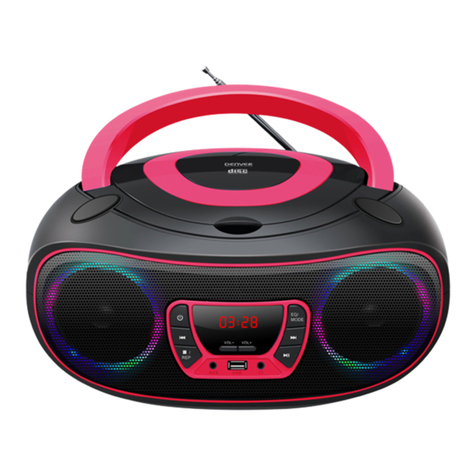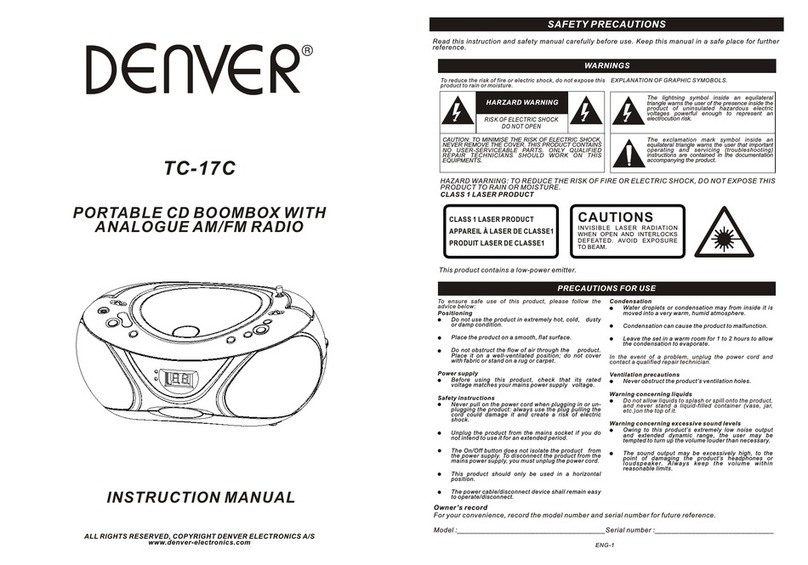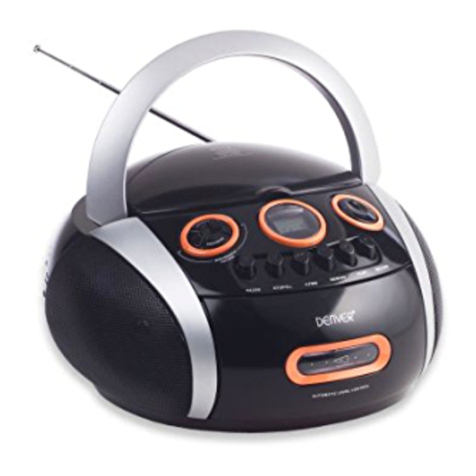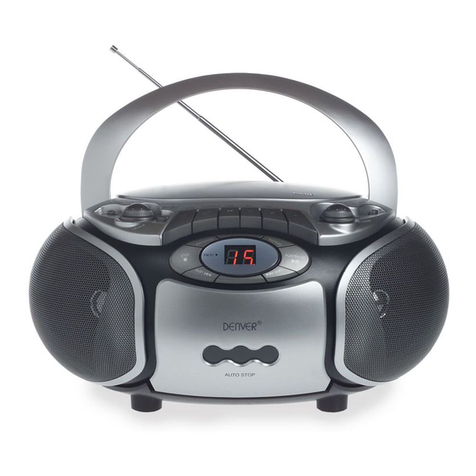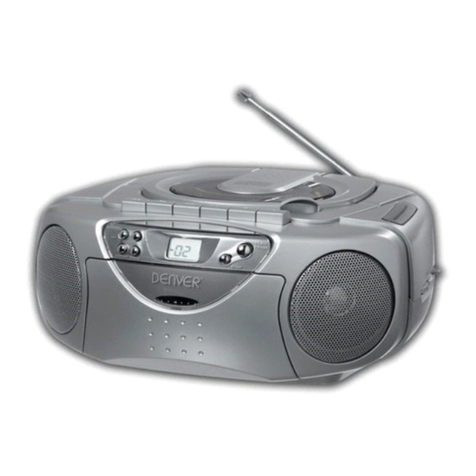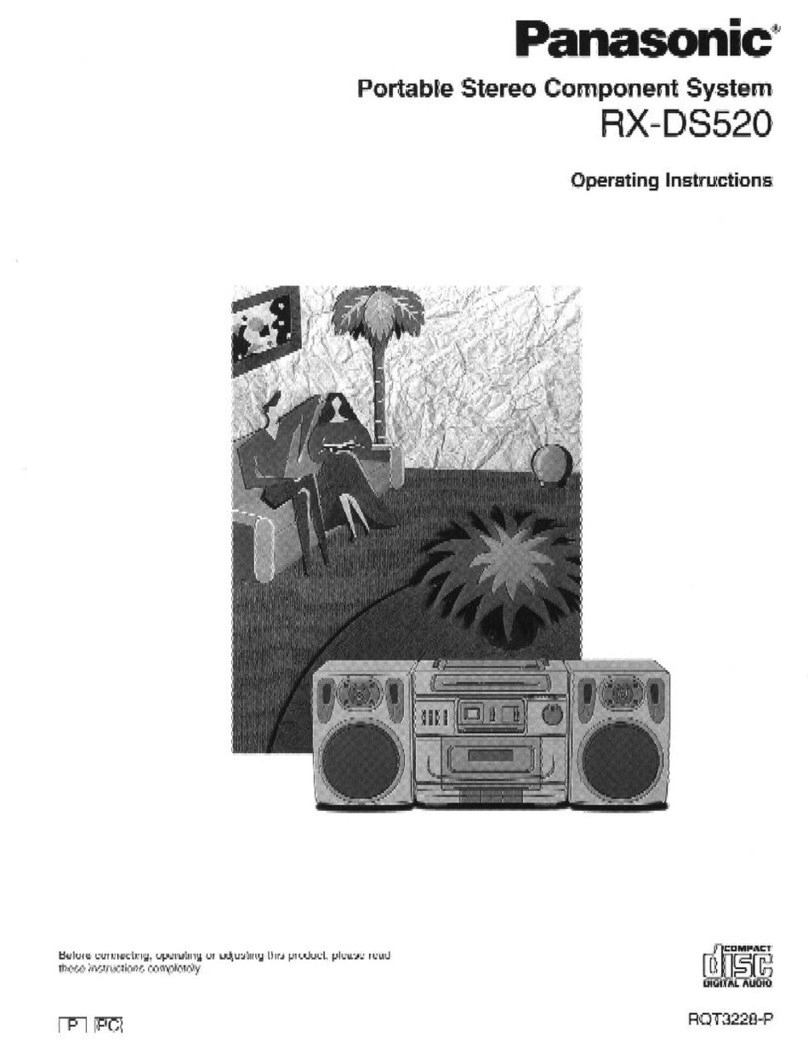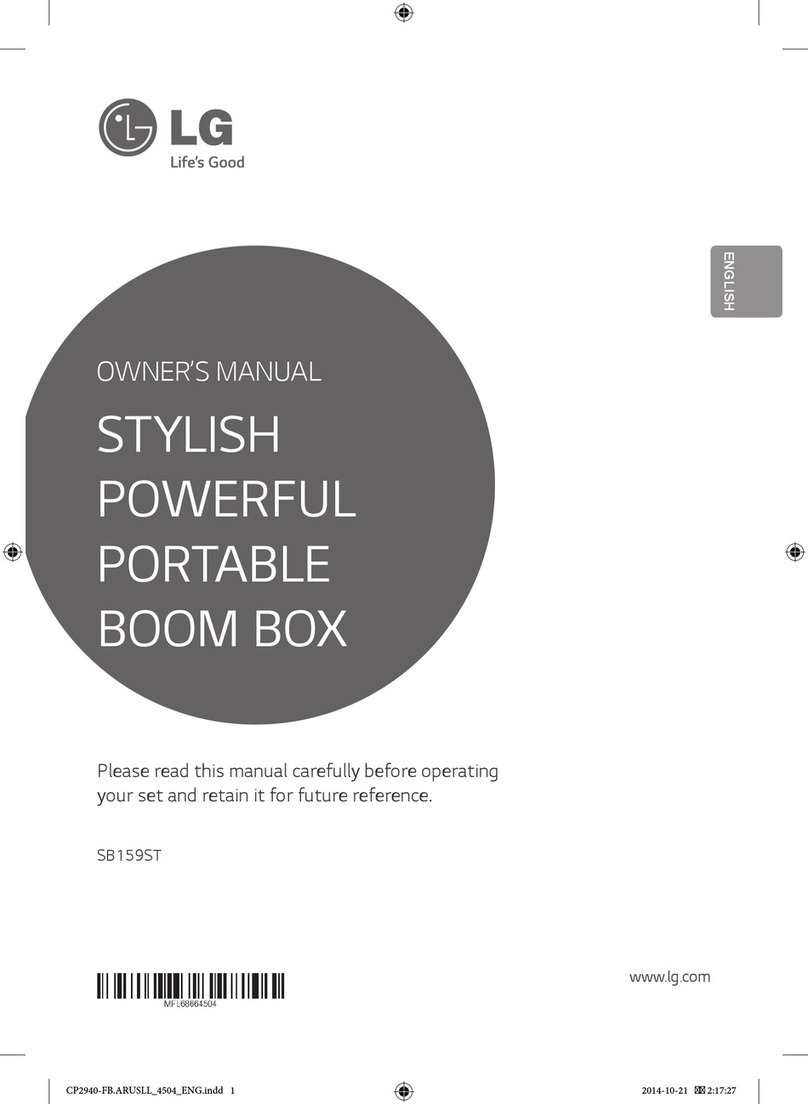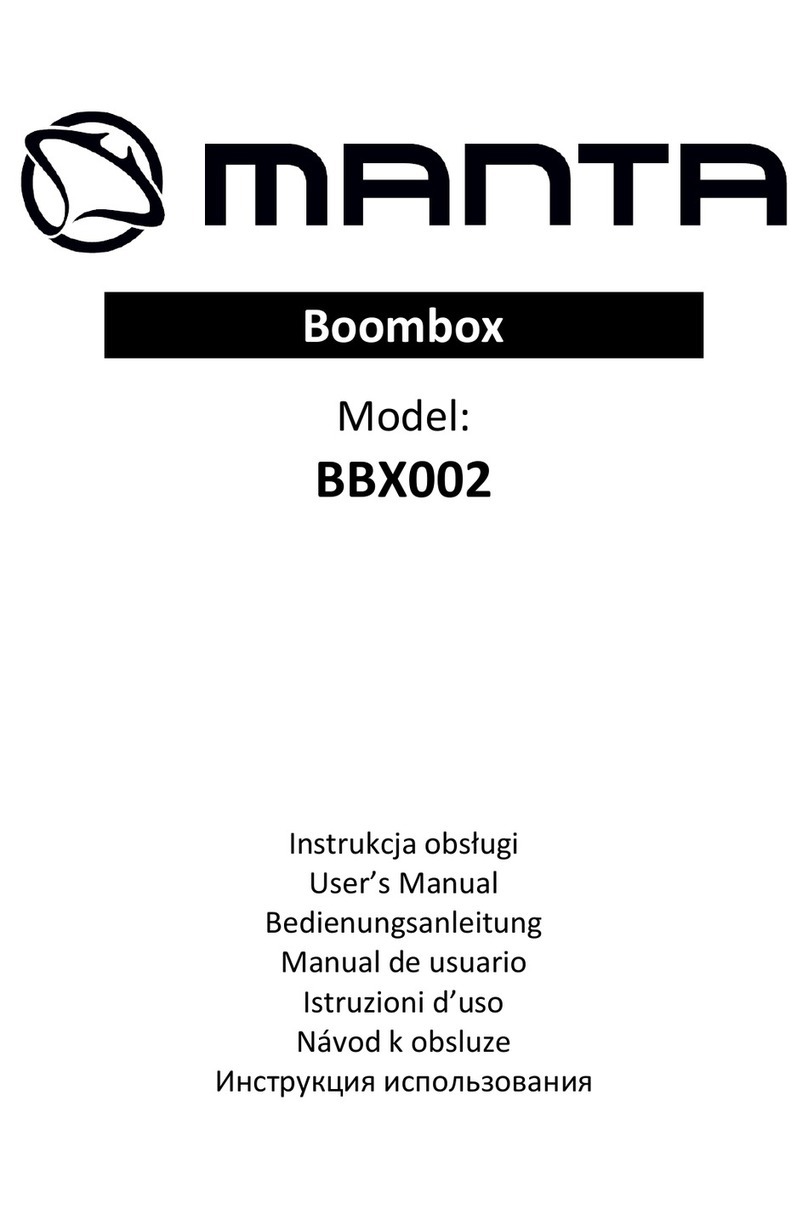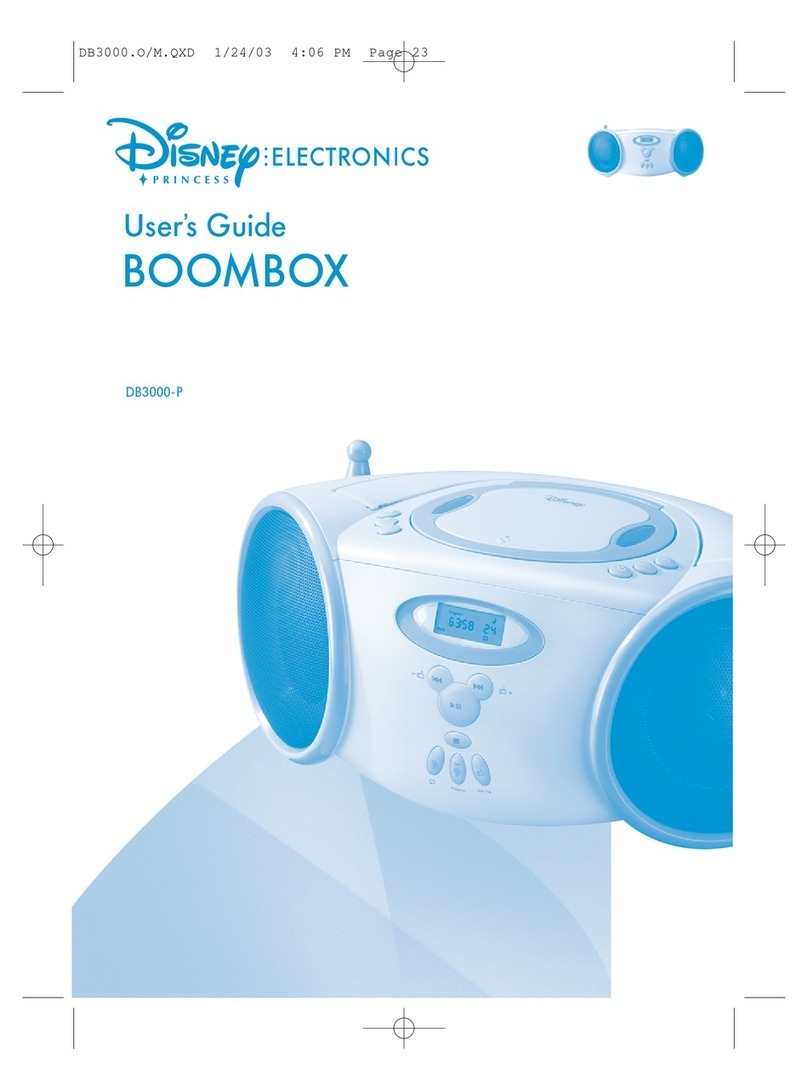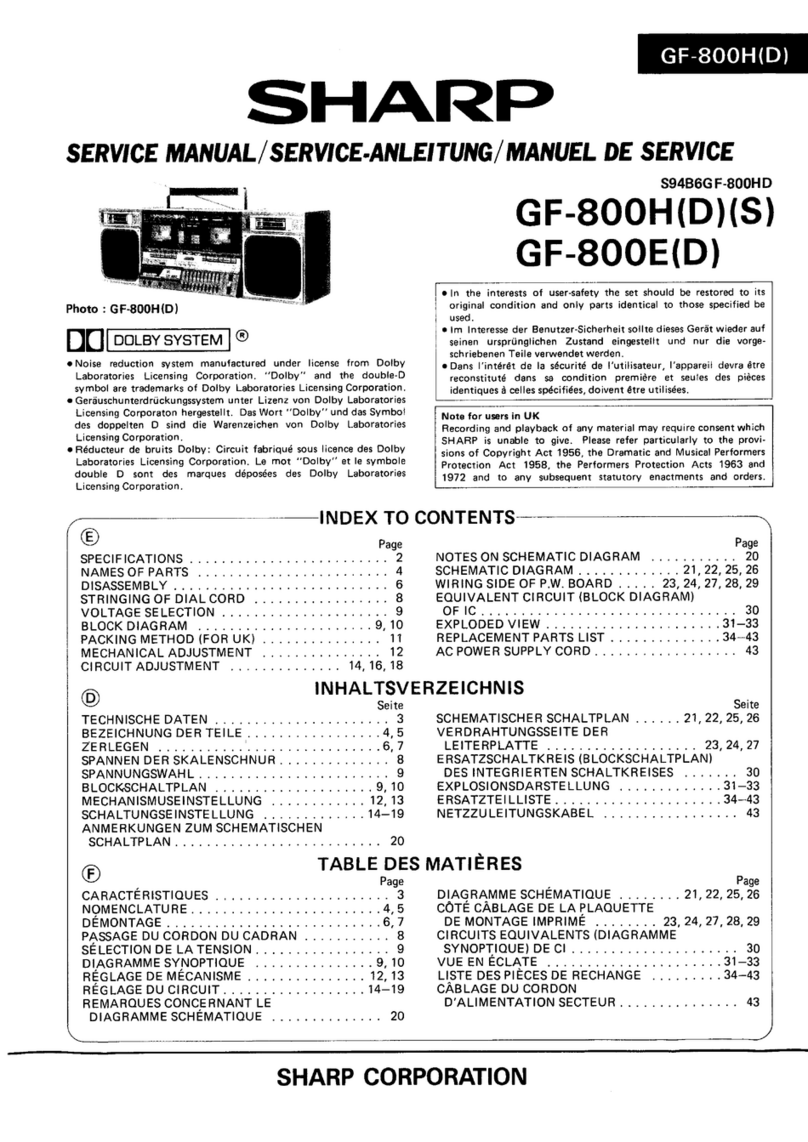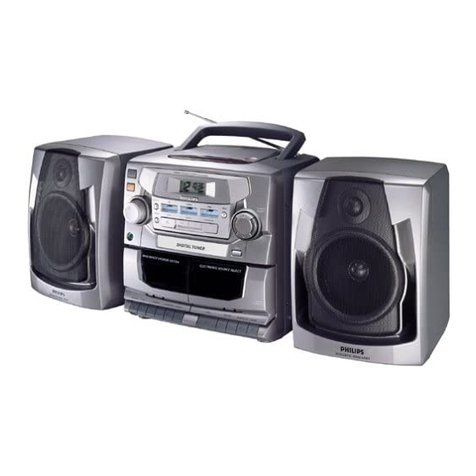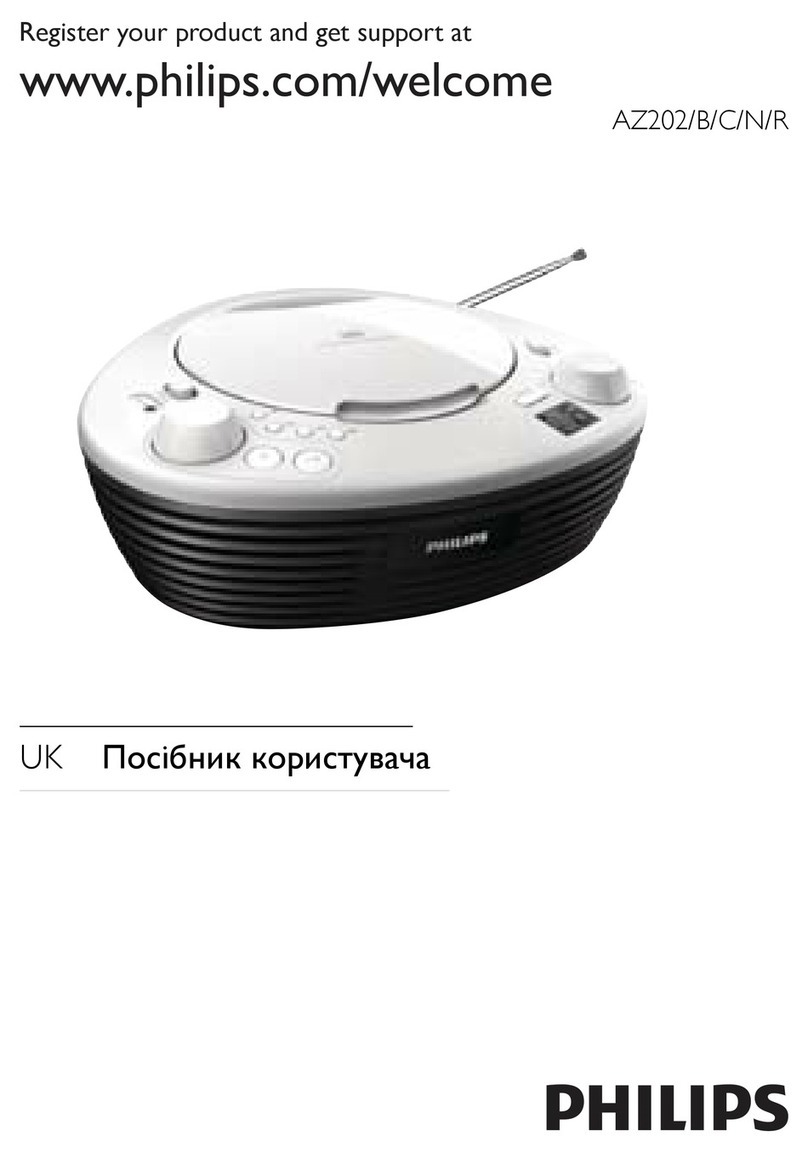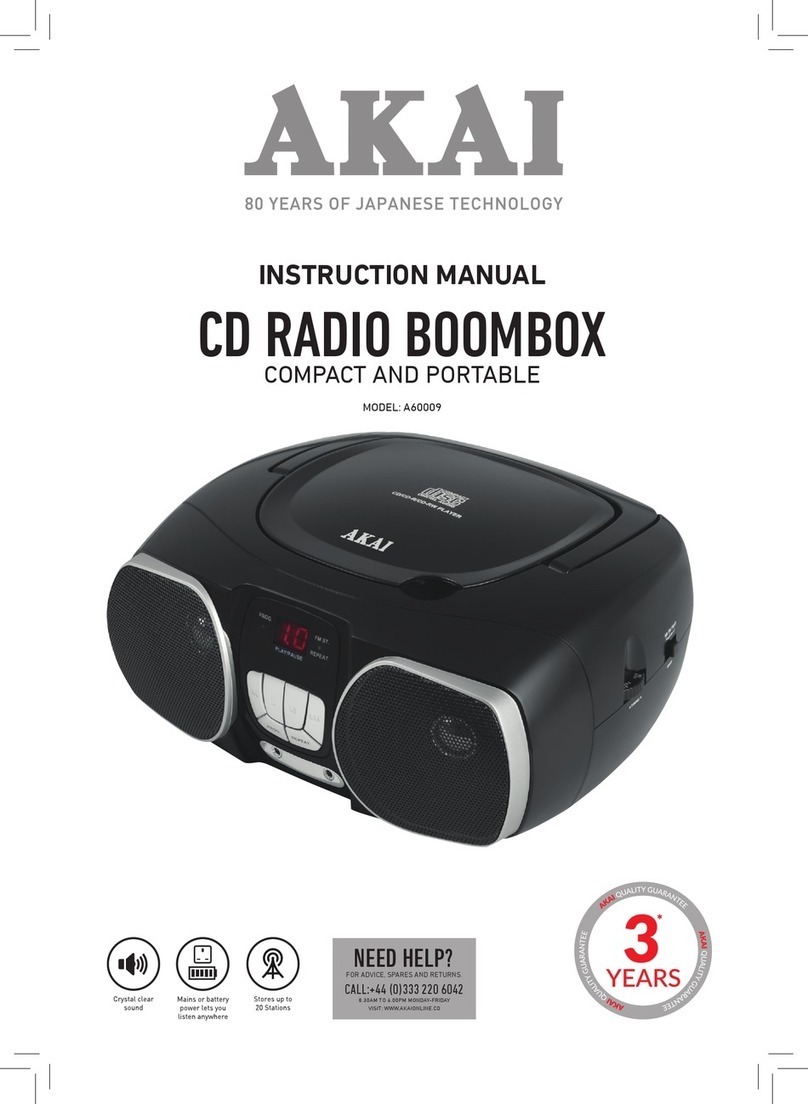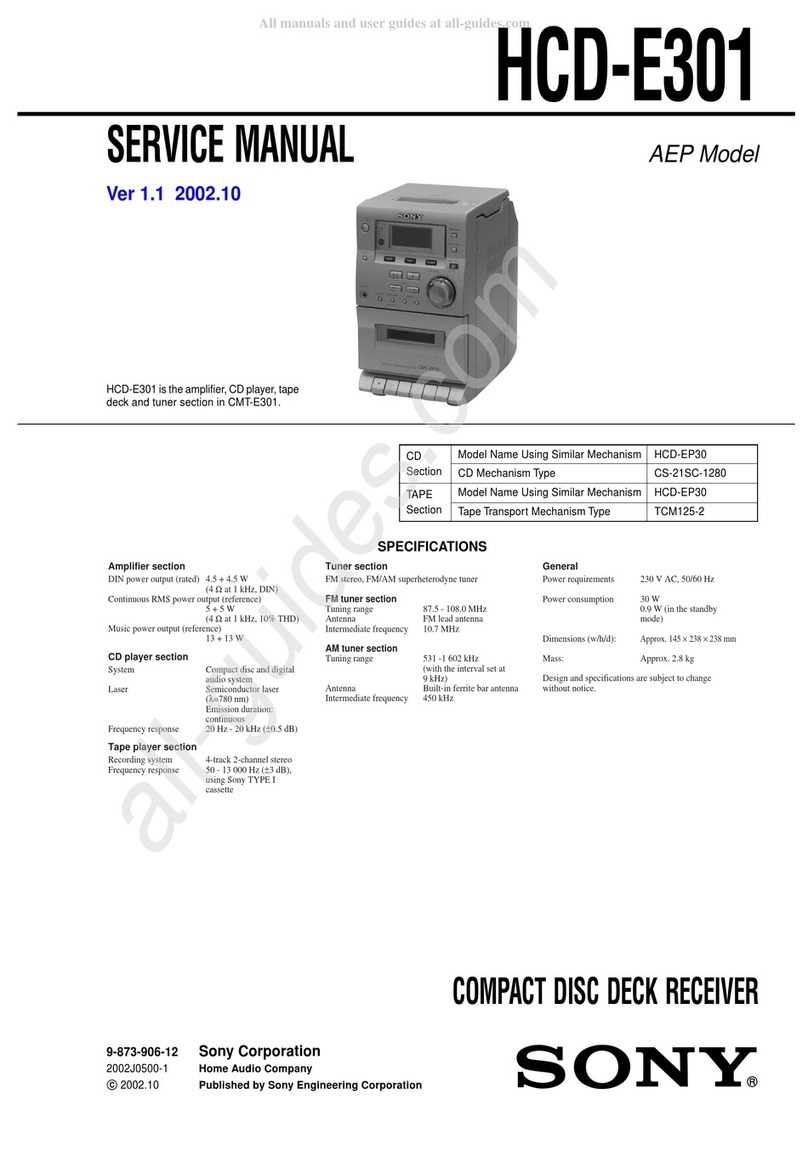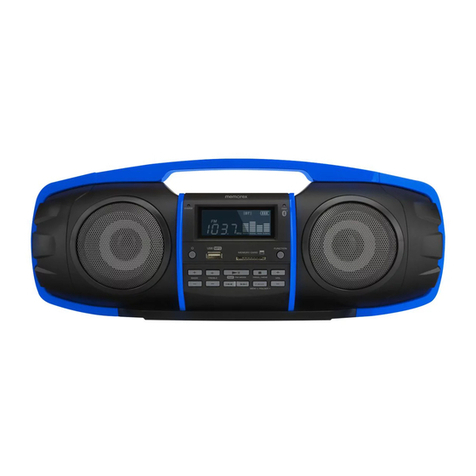
IMPORTANT SAFETY INSTRUCTIONS
1. Read these instructions – All the safety and operating instructions should be read before this
product is operated.
2. Keep these instructions – The safety and operating instructions should be retained for future
reference.
3. Heed all warnings – All warnings on the appliance and in the operating instructions should be
adhered to.
4. Follow all instructions – All operating and use instructions should be followed.
5. Do not use this apparatus near water – The appliance should not be used near water or
moisture – for example, in a wet basement or near a swimming pool, and the like.
6. Clean only with dry cloth.
7. Do not block any ventilation openings. Install in accordance with the manufacture’s instructions.
8. Do not install near any heat sources such as radiators, heat registers, stoves, or other
apparatus (including amplifiers) that produce heat.
9. Do not defeat the safety purpose of the polarized or grounding plug. A polarized plug has two
blades with one wider than the other. A grounding plug has two blades and a third grounding
prong. The wide blade or the third prong is provided for your safety. If the provided plug does
not fit into your outlet, consult an electrician for replacement of the obsolete outlet.
10. Protect the power cord from being walked on or pinched particularly at the plugs, convenience
receptacles, and at the point where they exit from the apparatus.
11. Only use attachments/accessories specified by the manufacturer.
12. Use only with the cart, stand, tripod, bracket, or table specified by the
manufacturer, or sold with the apparatus. When a cart or rack is used, use
caution when moving the cart/apparatus combination to avoid injury from tip-over.
13. Unplug the apparatus during lightning storms or when unused for long periods of time.
14. Refer all servicing to qualified personnel. Servicing is required when the apparatus has been
damaged in any way, such as power supply cord or plug is damaged, liquid has been spilled
or objects have fallen into the apparatus has been exposed to rain or moisture, does not
operate normally, or has been dropped.
15.Please keep the unit in a good ventilation environment.
16.CAUTION: These servicing instructions are for use by qualified service personnel only. To
reduce the risk of electric shock, do not perform any servicing other than that contained in
the operating instructions unless you are qualified to do so.
17. WARNING: Please use and install the exclusive supply apparatus only according to
manufacturer’s instruction.
18. WARNING: Please refer the information on exterior bottom enclosure for electrical and safety
information before installing or operating the apparatus.
19. WARNING: To reduce the risk of fire or electric shock, do not expose theis apparatus to rain
or moisture. The apparatus shall not be exposed to dripping or splashing and that no objects
filled with liquids,such as vases, shall not be placed on apparatas.
20. WARNING: For the terminals marked with symbol of “ “ may be of sufficient magnitude to
constitute a risk ot electric shock. The external wiring connected to the terminals requires
installation by an instructed person or the used of ready- made leads or cords.
21. CAUTION: Danger of explosion if battery is incorrectly replaced. Replace only with the same
or equivalent type.
22. WARNING: To prevent injury, this apparatus must be securely attached to the floor/wall in
accordance with the installation instruction.
23. WARNING: The battery (battery or batteries or battery pack) shall not be exposed to
excessive heat such as sunshine, fire or the like.
24. WARNING: The CRT in this apparatus employs a protective film on the face. This film must not
be removed as it serves a safety function and removal will increase the risk of serious injury.
25. WARNING: Excessive sound pressure from earphones and headphones can cause hearing
loss.
26. -- WARNING: The mains plug/appliance coupler/direct plug-in adapter is used as
disconnect device, the disconnect device shall remain readily operable.
27. WARNING: Only use attachments/accessories specified or provided by the manufacturer
(such as supply adapter, battery etc).
28. This apparatus is for commercial and professional use only.
29. This is CLASS II apparatus with double insulation, and no protective earth provided.
30.
- This lightning flash with arrowhead symbol within an equilateral triangle is intended to alert the
user to the presence of non-insulated “dangerous voltage” within the product’s enclosure that
may be of sufficient magnitude to constitute a risk of electric shock.
- Warning: To reduce the risk of electric shock, do not remove cover (or back) as there are no
user-serviceable parts inside. Refer servicing to qualified personnel.
- The exclamation point within an equilateral triangle is intended to alert the user to the presence
of important operating and maintenance instructions in the literature accompanying the appliance.
31. Invisible laser radiation when open and interlocks defeated. Avoid exposure to beam of
laser.
32.Minimum distances of 5 cm around the apparatus for sufficient ventilations.
33.Do not install this equipment in a confined space such as a book case or similar unit. The
ventilation should not be impeded by covering the ventilation openings with items such as
newspaper, table-cloths, curtains etc.
34.No naked flame sources, such as lighted candles, should be placed on the apparatus.
35. Attention should be drawn to environmental aspects of battery disposal.
CAUTION
RISK OF ELECTRIC SHOCK
DO NOT OPEN
23

